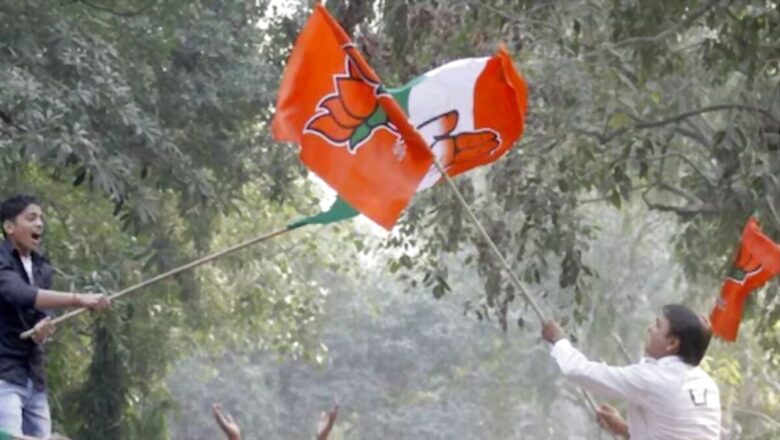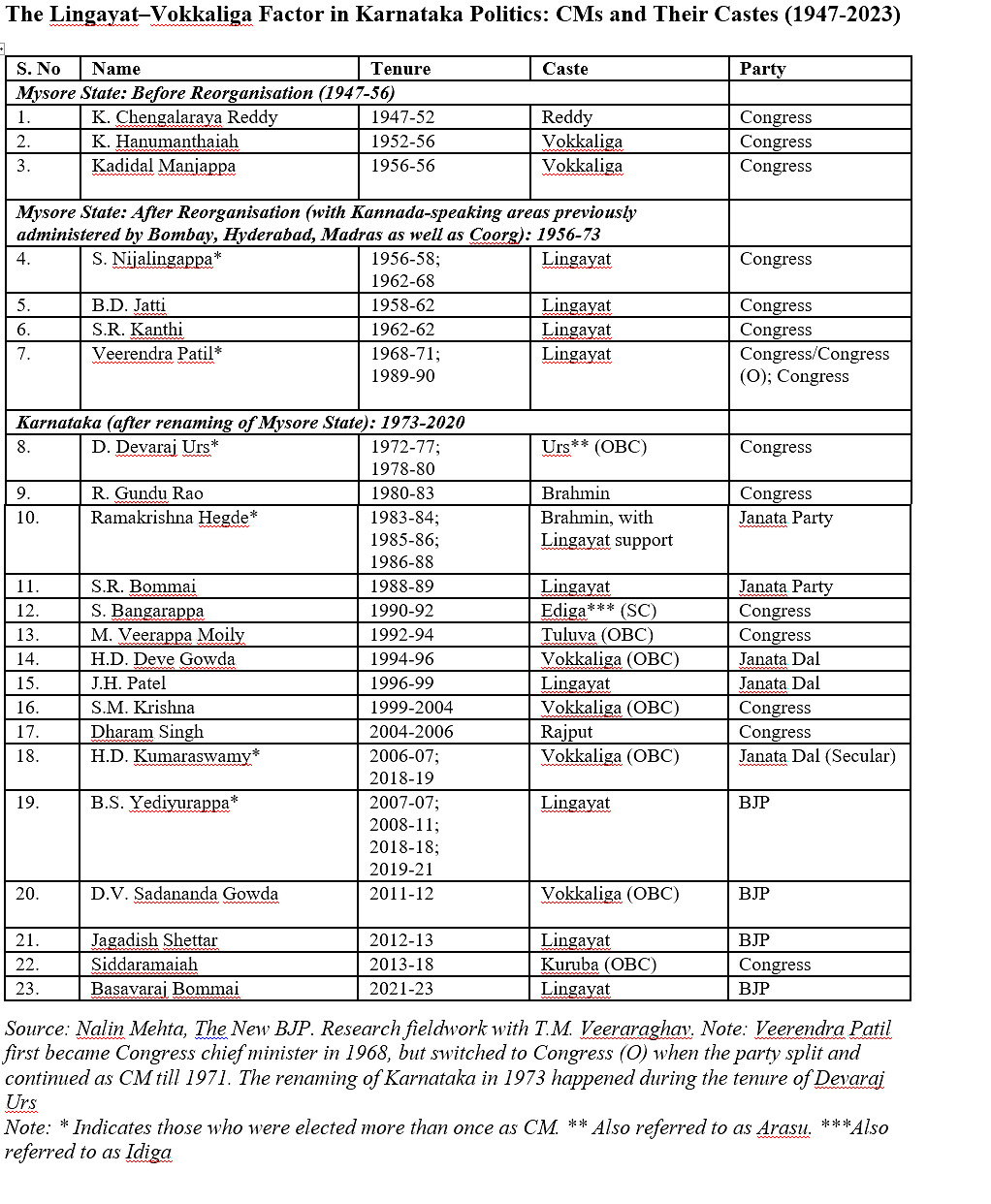
views
The shaded grand courtyard of the Sree Siddaganga Math (monastery) in Tumkur, one of the oldest and most influential shrines of the Shiva-focused Lingayat sect, is an unlikely place for a political conversation. Nestled amid rocky hillocks that house several sacred caves, the monastery was founded in the 15th century as a Sharana (Shiva devotee) abode for spreading the teachings of the twelfth-century Lingayat statesman-saint-social reformer Basavanna. Trying to understand the famed influence of Lingayat voters in Karnataka politics, I once asked its president, Sri Sri Siddalinga Mahaswamigalu, about how his institution viewed politics.
While carefully staying away from any kind of political statement about either the Bharatiya Janata Party (BJP) or Congress, the swami said something that has stayed with me ever since.
“Elections are for voting by each and everyone, but wherever you go, religion and caste are ridden with politics,” the 55-year-old monk said. “Without caste and religion, there is no politics in India. That is bad, but we hope that one day all will come out without religion and caste. But today, we are seeing everyone running behind caste and religion.”
Five years ago, when we had this conversation at the monastery, it was at the epicentre of a heated political exchange, because the Congress’s then chief minister Siddaramaiah had tried to reduce the BJP’s dominance among Lingayat voters by recommending minority status for the sect. While many Lingayats also call themselves Veerashaivas, the then Congress government also simultaneously recognised Veerashaiva-Lingayats as a separate Lingayat subsect, opening up another contentious religious argument. It proved to be a lightning rod among Lingayat voters. So much so that when the BJP emerged as the single largest party in the polls in 2018, its lead was powered by wins in a majority of the 70 assembly seats where Lingayat voters were dominant (over 15 per cent of the voters).
Today, five years later, we are seeing another BJP vs Congress political fight over the Lingayat vote in Karnataka.
While the BJP’s greatest state stalwart, BS Yeddiyurappa, remains Karnataka’s tallest Lingayat leader and is campaigning heavily in the state, others like its former chief minister Jagadish Shettar and former deputy chief minister Laxman Savadi have defected to the Congress.
Whether this will dent the BJP’s Lingayat vote base or not will be crucial to its poll fortunes.
Likewise, the Congress challenge is being fronted by Vokkaliga strongman DK Shivakumar and Siddaramaiah, who has long sought to resurrect a wider social coalition of AHINDA — a Kannada acronym for ‘Alpasankhyataru’ (minorities), Hindulidavaru (backward classes) and Dalitaru (Dalits).
Similarly, former prime minister Deve Gowda’s JD (S), which is hoping to play kingmaker after the elections, is banking on its Vokkaliga bastions in the state’s Old Mysore region.
In a state, where the Lingayat-Vokkaliga factor has always been politically pivotal, what exactly does this mean?
And why does it matter?
LINGAYATS, VOKKALIGAS AND CHANGING ‘DOMINANT’ CASTE PATTERNS
Karnataka’s power matrix, since Independence, has been defined by its changing ‘dominant caste’— a term coined by sociologist M.N. Srinivas in 1959 — politics.
The Ekikaran (Unification) movement had led to Kannada-speaking regions from the adjoining states of Madras, Hyderabad and Bombay being incorporated into the old princely state of Mysore.
Mysore State was first reorganised on November 1, 1956, with the addition of new areas vide the States Reorganisation Act. It was renamed Karnataka on November 1, 1973 vide the Mysore State (Alteration of Name) Act, 1973. Before this reorganisation in 1956, Vokkaligas, a land-owning farming community, were the biggest caste in Mysore.
The Congress’s Lingayat leaders had led the demand for Karnataka’s unification and came to constitute the largest caste community in the enlarged state. Lingayats also formed a major support base for the party in the non-Mysore regions of the new state.
By way of background, while the Lingayat lineage goes back to the 12th century, they were first listed as a caste within Hinduism in the Mysore state’s 1881 Census and first referred to as a ‘sect’ in 1928 by scholar R.G. Bhandarkar.
The community’s unique religious attributes — the wearing of an Ishtalinga (a symbol of Shiva) on the body, strict vegetarianism, rejection of temple worship, the substitution of Brahmins with their own priests in life-death ceremonies, their rejection of the caste system and their practice of burying the dead instead of cremation — meant that, by the time of Independence, some caste scholars had begun referring to them as a ‘caste-sect’.
Others, like M.N. Srinivas, regarded the Lingayats as a ‘status-honour’ group linked with the process of ‘Sanskritisation’. It was this longstanding debate that Siddaramaiah had waded into with his minority-status proposal in 2018.
THE HISTORICAL IMPORTANCE OF THE LINGAYAT-VOKKALIGA FACTOR
The two traditionally powerful caste groups, Lingayats and Vokkaligas, virtually controlled state politics between 1956 and 1972 and the L-V caste equation powered the Congress’s political hold over Karnataka until the mid-1970s.
As political scientist James Manor summed up, “This system worked well so that the period between 1956 and the early 1970s can be seen as an era of Lingayat raj (with Vokkaliga support) in which the dominant groups had a rather smooth sailing.”
The political dominance of these castes was so pronounced that, in the 1952-72 period, Lingayats accounted for an average of 31 per cent of the Karnataka assembly’s legislators (despite being only 15.5 per cent of the population at the time). Vokkaligas made up an average of 27.9 per cent of legislators (despite being 12.98 per cent of the population then).
In other words, for several decades, every second Karnataka legislator belonged to one of these two castes. This is also reflected in the choice of chief ministers.
Before the 1956 reorganisation, two of Mysore state’s first three chief ministers were Vokkaligas (1947-56). After the reorganisation, the first four chief ministers were all Lingayats (1956-71).
Thereafter, leaders from other caste groups started occupying the seat of power in Bengaluru as new caste coalitions began to challenge the traditional structures of power. But Lingayat leaders still made up 42.1 per cent (eight of 19) of all state chief ministers between 1956 and 2020 (see table below).
After Lingayat regional satrap S. Nijalingappa (chief minister in 1956-58 and then 1962-68) broke away from the Congress in the great split of 1969 between Indira Gandhi and the Old Guard (called the ‘Syndicate’), state Congress leaders wove together a new rainbow caste coalition.
Chief Minister Devaraj Urs in 1972 sought to break the stranglehold of the Lingayats and Vokkaligas by giving political representation to other caste groups that had so far been relatively marginalised.
He coined a new acronym for this fresh social coalition: AHINDA. This was a Kannada acronym for ‘Alpasankhyataru’ (minorities), Hindulidavaru (backward classes) and Dalitaru (Dalits).
Presaging V.P. Singh’s 1989 move to change the politics of the Hindi heartland with his adoption of the Mandal Commission report, Urs sought to stir up Karnataka politics with the appointment of the state’s first Backward Classes Commission.
It was headed by L.G. Havanur, who hailed from the backward Beda (hunter) community. This commission identified 15 backward communities, 128 backward castes and 62 backward tribes, and created a new basis for affirmative reservation in the state.
The Havanur Commission’s findings, as political scientist Valerian Rodrigues has shown, led to strong protests by upper castes and a challenge in the Karnataka High Court, which upheld its findings. Subsequent Backward Classes Commissions in Karnataka — Venkataswamy Commission (1983-86) and Justice Chinnappa Reddy Commission (1988-90) — led to Vokkaligas also being classified as OBCs.

Politically, this meant that many Lingayat leaders drifted away from the Congress in the 1970s. They realigned, instead, with the anti-Congress JP movement.
The BJP’s rise in Karnataka owes a great deal to the Lingayat vote shifting away from the Congress and towards the BJP from the 1990s. This especially gathered momentum after the unceremonious sacking of Veerendra Patil as chief minister by Rajiv Gandhi in 1990 (more details in part 3 of this series).
BJP, CONGRESS AND JD (S) SOCIAL DISTRIBUTION OF TICKETS
A look at the ticket distribution by the three major parties in 2023 reflects their traditional social matrices of support.
The BJP has given the largest share of its tickets to Lingayat candidates: 62. In comparison, the Congress has fielded 51 and JD (S) 44 Lingayat candidates.
The next highest chunk of tickets is for Vokkaliga candidates among all three parties. The BJP has fielded 42, Congress 43 and JD (S) 54 candidates from the community.
The third biggest chunk is for OBC candidates: the BJP and Congress have both fielded 40 each, and JD (S) 28.
All three parties have fielded a similar number of Scheduled Caste (SC) and Scheduled Tribe (ST) candidates. For SCs, the BJP has 37, Congress 35 and JD (S) 34. For STs, the BJP has 17, Congress 16 and JD (S) 14.
This distribution indicates that in Karnataka, all three major parties are looking to secure their traditional social bastions, even as they look to expand into newer areas.
For example, the Congress is looking to break off chunks of the BJP’s traditional Lingayat base, while the BJP is making an aggressive pitch to increase its presence in the 60+ seats of the Old Mysore region, where it has traditionally been weak.
THE MODI FACTOR
With Prime Minister Narendra Modi slated to campaign aggressively in Karnataka later this week, the BJP is also banking majorly on the Modi factor.
It is betting that the Modi factor and the PM’s connect with Kannadiga voters can help it regain momentum in a contest that has so far been an uphill battle for the party.
In that sense, Narendra Modi’s recent photo-op with Yediyurappa, holding hands with him at the inauguration of the Shivamogga airport in February, was key political signalling by the Prime Minister.
Home Minister Amit Shah’s subsequent photo-op with the former chief minister over breakfast, where he insisted on taking a bouquet of flowers from his son BY Vijayendra was yet another important signal in the same vein.
In an election where the BJP’s internal challenges have dominated some of the headlines in the first part of the campaign, these pointed photo-ops by Modi and then Shah were meant to reassure Lingayat voters.
In contrast, the Congress has basically been focusing its campaign on local issues in Karnataka, banking on anti-incumbency, an appeal to regional pride and allegations of local corruption.
Overall, the Karnataka election result, to a large extent, will hinge on how much the major parties can safeguard their core vote-banks in key geographies. And the extent to which the Lingayat and Vokkaliga vote may shift.
This is the second part in a 3-part series by Nalin Mehta on the Karnataka elections. See Part 1 here.
Coming up in Part 3: Veerendra Patil, Rajiv Gandhi and why a four-decade-old incident still matters in Karnataka politics
Nalin Mehta, an author and academic, is the Dean of School of Modern Media at UPES University in Dehradun, a Non-Resident Senior Fellow, Institute of South Asian Studies at the National University Singapore, and Group Consulting Editor, Network 18. He is the author of The New BJP: Modi and the Making of the World’s Largest Political Party.
Read all the Latest Opinions here
















Comments
0 comment